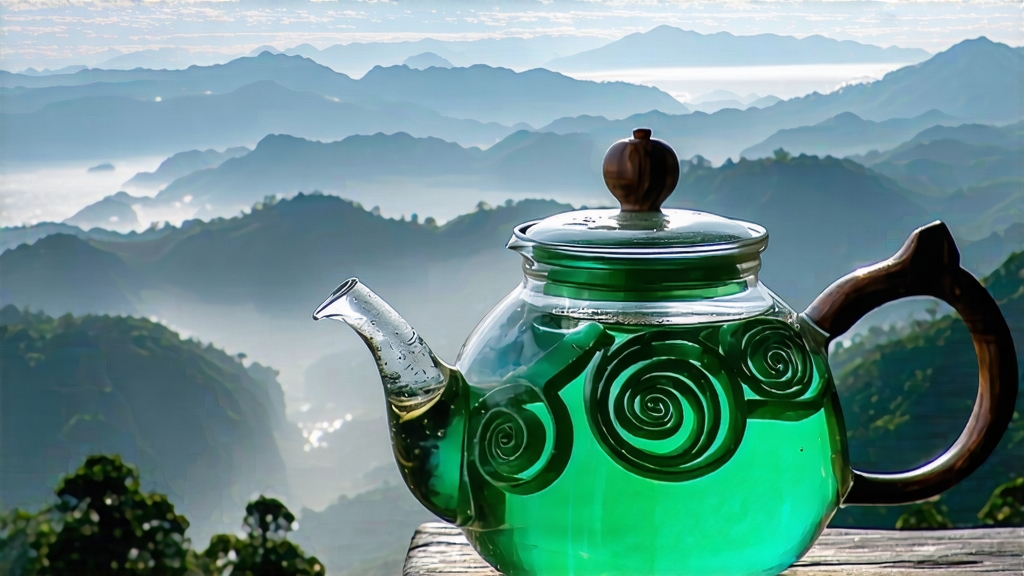
Biluochun, whose name translates literally to “Green Snail Spring,” is one of China’s ten most celebrated teas, yet it remains modestly tucked into the mist-laced hills of Dongting Mountain beside Lake Tai in Jiangsu Province. To international drinkers accustomed to the sword-shaped blades of Longjing or the downy tips of Silver Needle, Biluochun presents a miniature marvel: tiny, spiral-shaped pellets so compact that a single gram contains more than sixty individual buds. When dropped into water, these pellets tremble, then gracefully unfurl like dancers awakening, releasing an aroma that French sommeliers have likened to a walk through an orchard after rain. Understanding this tea is to understand how Chinese artisans can compress an entire season into a single curl of leaf.
Historical whispers place Biluochun’s birth during the late Tang dynasty, but credible written records begin in the Ming Wanli era (1573–1620). Local legend tells of a tea picker who followed the fragrance of wild tea into the undergrowth, only to discover the bushes entwined with peach, plum, and apricot trees. The intermingling of floral and fruity volatiles imprinted itself onto the leaf, giving rise to the tea’s signature scent. The Kangxi Emperor, touring the region in 1699, was presented with what locals still called “Xia Sha Ren Xiang” (“Scary Fragrance”) because its perfume was almost too intense. The emperor, charmed yet diplomatic, rechristened it Biluochun, referencing both its coiled shape and the season of earliest harvest. From that moment, the tea became a tribute item, couriered northward on horseback and canal boat to the Forbidden City.
Strictly speaking, only leaf plucked within the original Dongting East and West Mountain micro-zones can claim the title “Authentic Biluochun.” Yet the market now recognizes three broader categories. Original-core Biluochun comes from the ancient 2,000-hectare belt where tea bushes share soil with citrus, bayberry, and loquat; the fruit trees act as living trellises, shading the tea and donating subtle sugars to the leaf. Peripheral Biluochun is grown on lower slopes outside the core, still within Wuzhong District, where the lake’s moderating influence remains strong but fruit-tree density declines. Finally, “Extended” Biluochun is produced in nearby counties such as Wuxi and Changzhou, where cultivars have been transplanted and processing techniques faithfully copied; these versions offer an affordable introduction but rarely achieve the multi-layered perfume of the mountain originals. Purists insist that only the core-zone spring pick, taken before the Qingming festival in early April, deserves the top grade “Special One.”
The cultivar itself is a small-leaf Camellia sinensis var. sinensis locally named “Dongting Qunti,” literally “group seedling,” because the bushes propagate sexually rather than by cloning. This genetic diversity translates into a broader spectrum of aromatics, but it also demands painstaking hand selection. Pickers, almost always women because of their allegedly gentler touch, work in pairs before sunrise. They pluck the “single bud with one unfolding leaf” standard, discarding any specimen shorter than 2.5 cm or showing purple hue. On a good morning, a veteran picker gathers barely 500 g of fresh leaf; it takes 55,000 buds to yield 500 g of finished tea. The plucked shoots are carried in shallow bamboo trays to prevent compression, then wheeled to the village alleyways where the killing-green woks await.
Crafting Biluochun is a kinetic poem in four compressed movements: fixation, rolling, spiral-twisting, and drying. First, the freshly picked shoots are tumbled into woks heated to 180 °C. The tea master uses only his bare hands, repeatedly tossing the leaf skyward so that steam escapes and grassy notes evaporate. Within three minutes the leaf turns jade-green and limp; this is the moment to begin rolling. Two palms press the hot leaf against the wok, moving in concentric circles that coax cellular juices to the surface. Temperature is then dialed down to 70 °C, and the most iconic step commences: spiral-twisting. The master’s fingers pinch, rub, and shake the leaf so that each bud curls into a tight shrimp-like coil. Observers often mistake this for mere showmanship, yet the motion aligns microscopic leaf hairs and seals aromatic oils inside the curl. Finally, the coiled tea is transferred to a